Have you ever ended up with a scratch or two from a little too much kitty roughhousing? While it may seem cute and harmless, playtime aggression in cats can evolve into troublesome behavior. It’s important to know that your cat isn’t being “naughty”—it’s natural. But it's also essential to teach them appropriate play boundaries to avoid those painful love bites.
In this article, we'll take a deep dive into understanding the causes of this feisty feline behavior. We'll discuss how to handle it, suggest ways to redirect that feisty energy safely, and share how to teach your cat to play without turning your hand into a personal scratching post. Ready for a game changer in your pet's playtime routine? Let's jump in.
From Cute Scratches To Painful Strikes: Setting Boundaries
If you've ever welcomed a new kitten into your home, you're probably no stranger to the countless "love scratches" adorning your hands, those playful battle scars left by pint-sized claws and baby teeth.
This is the unmistakable kitten ownership badge, a tale told by dotted lines and tiny, toothy nicks on tender human skin.
Yes, it's all fun and games when those adorable feline bundles are small, their playful strikes barely stinging.
But as their weeks roll into months, those cute and harmless taps morph into not-so-pleasant assaults. That's when you realize it's high time to teach your furball some boundaries.
Remember, though, when it comes to teaching new behaviors, consistency is the golden rule.
Be wary of nurturing those cute but potentially aggressive interactions between your hands and your baby furball.
Being adorable today can easily become a thorny issue tomorrow, and you wouldn't want to be left wrestling a hard-to-kick bad habit.
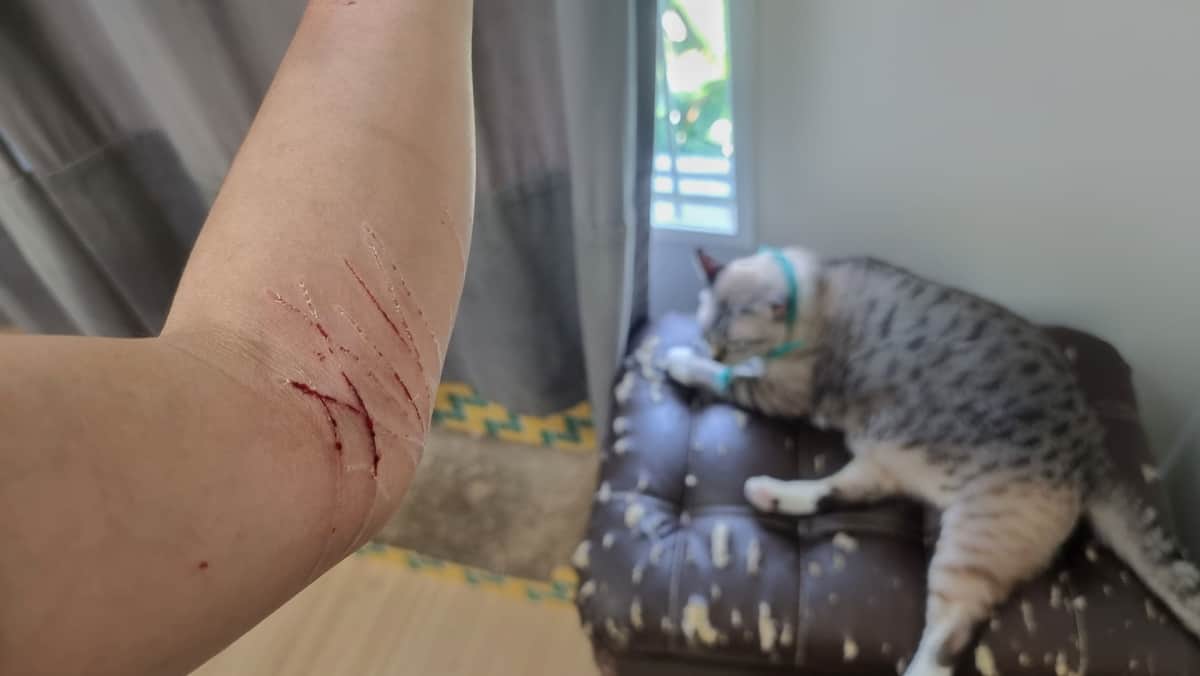
The Reasons For Feline Playtime Aggression
Your kitten is not being "bad". When playing, all young mammals imitate some form of adult behavior that will be useful for them as they grow up.
With kittens, it is either hunting or fighting. Watch a litter of kittens tumble around on the rug, and you will see the same type of playful aggression displayed between them.
It is their way to practice hunting and fighting routines that nature intended them to use as adult cats.
Clearly, there is nothing wrong with the aggressive play itself. The problem begins when the target is the delicate human hand. The solution lies in redirecting the aggression to more suitable targets.

Adding a Playmate for Your Kitten
Another kitten can make the perfect target, or rather a partner, for aggressive play.
Protected by their furry coat, kittens seem to know their boundaries and thresholds, and there is usually no need to intervene in their aggressive play.
Obviously, the decision to take in a second kitten is more complex than that. You are not getting a toy for your kitten but rather committing yourself to taking care of another feline for decades to come.
However, if you can provide a home for another kitten, remember that in terms of kitten behavior, raising two kittens is actually easier than raising one.
They keep each other occupied and make the best playmates for any kitty play, aggressive types included.
Redirecting Playtime Aggression to a Toy
A cat toy makes a perfect outlet for all that pent-up playful aggression. Use fish-rod-like toys to initiate interactive play sessions with your kitten.
This is a great way to interact with your cat while keeping your hands out of reach.
Use a variety of toys, whether bought or homemade, but make sure that they create enough distance between the kitty and your hands.
Rotate the toys and keep them out of reach when you are not playing with your kitten.
This will keep them fresh and enticing when you do bring them out (and it may prevent your kitten from getting entangled in any strings while you're away).
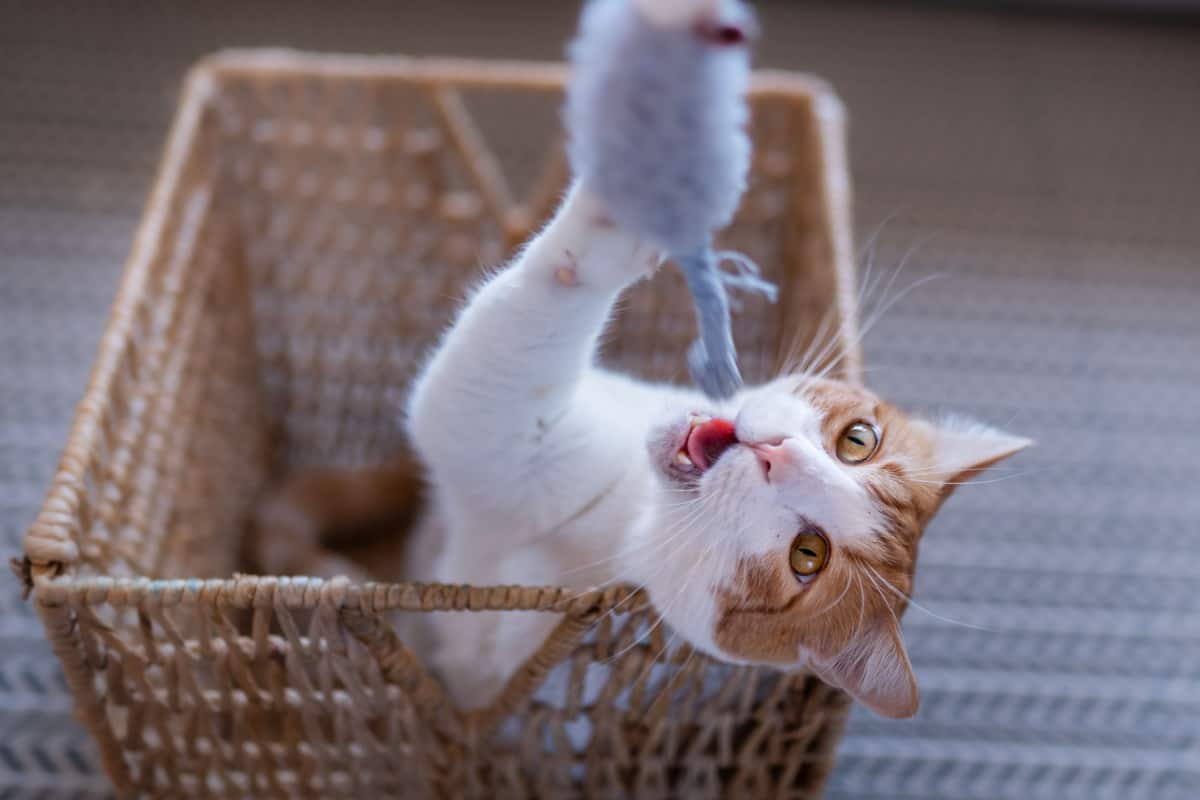
How to Release Your Hands
Your fingers are indeed tempting. With a vibrant kitten or even a cat, it's sometimes too easy to find your hand held tight by teeth and claws.
Often, they will not be penetrating the skin but painfully close to that point. Your cat is likely to be extremely excited at this point and hold tight, not letting go of his coveted prize.
What NOT to do:
1. Avoid Forceful Escapes
When a cat grips your hand with its teeth or claws, do not try to pull your hand away forcefully.
The feline instinct is to tighten its hold when prey tries to escape, and you could inadvertently exacerbate the situation and end up with painful scratches and even bites.
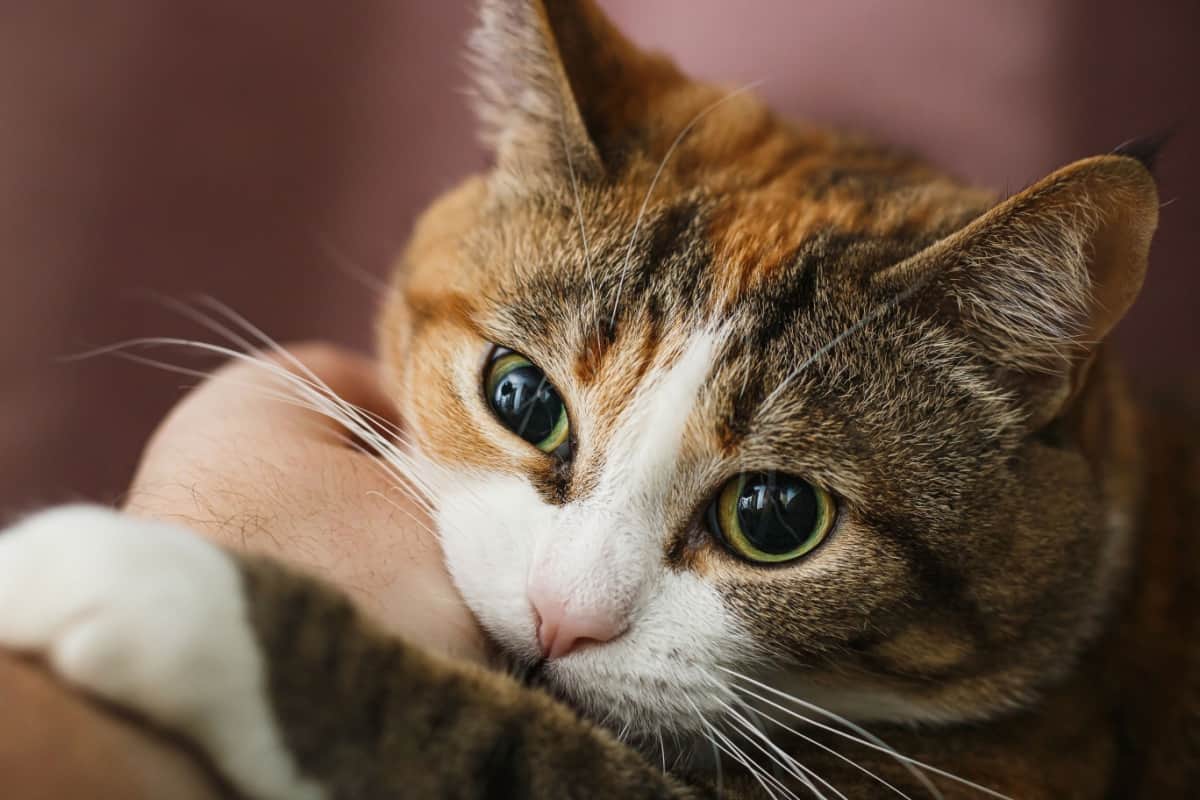
2. Refrain from Raising Your Voice
Shouting or yelling at your cat in this scenario is not advised. Cats do not respond positively to loud noises, and at this point, they are not thinking clearly.
Raising your voice can heighten their stress and may aggravate the situation, leading them to become even more aggressive due to fear.
SIGN UP FOR THECATSITE'S EMAIL UPDATES >
3. Never Resort to Physical Punishment
Never hit your cat, not in this situation or any other. Physical punishment will not only hurt your cat, but it will also breed mistrust and fear.
This can result in your cat becoming more aggressive, potentially leading to a cycle of stress and fear for both you and the cat.
Future interactions may become more volatile, with the cat more likely to bite and scratch out of fear.
What TO do:
1. Maintain a Relaxed Stance
Keep the hand that's captured by the cat's teeth and claws relaxed. If you tense up, it may further provoke the cat's predatory instincts, making it harder for you to extricate yourself from the situation.
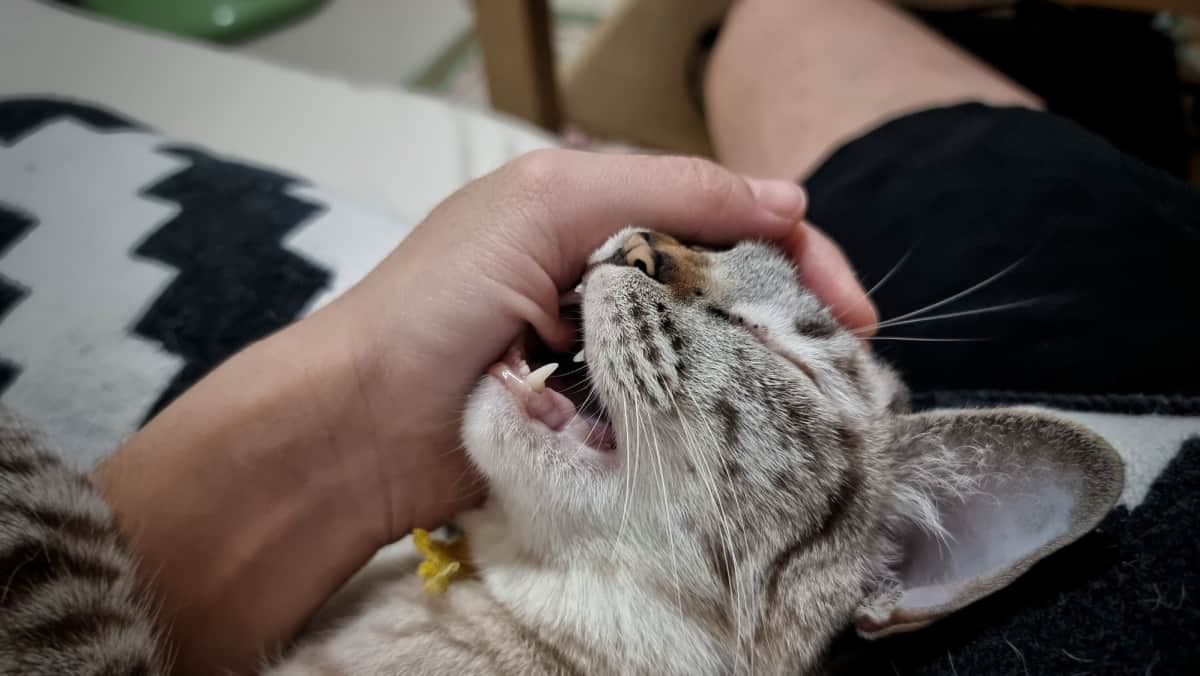
2. Stay Calm & Non-confrontational
Try to maintain a calm demeanor and avoid making direct eye contact with your cat. In the feline world, direct eye contact can be perceived as a threat or challenge, which may escalate the situation.
3. Provide Distractions
Use your free hand to grab a toy or some other object to divert your cat's attention. Redirecting the cat's focus away from your hand and onto a less harmful object can help diffuse the situation.
4. Engage in Playful Diversions
Make playful moves with the distraction you've chosen. This could potentially entice your cat to release your hand in favor of pursuing its "new prey."
This tactic can turn a tense situation into a more playful interaction, helping the cat to redirect its energy positively.
5. Utilize Environmental Distractions
If you can't reach a suitable object, create a diversion with your free hand.
Tap on a surface or make scratching noises on fabric — anything that will catch your cat's attention and make it lose interest in its "current prey" (your hand), focusing instead on the new attraction.
6. Wait for Release
Wait for your cat to loosen its grip on your hand or, even better, to let go completely. Attempting to forcefully pull your hand away while the cat still has a firm grip could lead to injuries.
7. Withdraw Safely
Once you're sure you can safely remove your hand, do so swiftly but gently, moving your hand out of the cat's immediate reach.
Swift action can prevent the cat from re-establishing its grip, while a gentle movement will minimize the risk of provoking a fear response.
8. Allow for a Cooling Off Period
After such an incident, it's beneficial to take a break and give your cat some space.
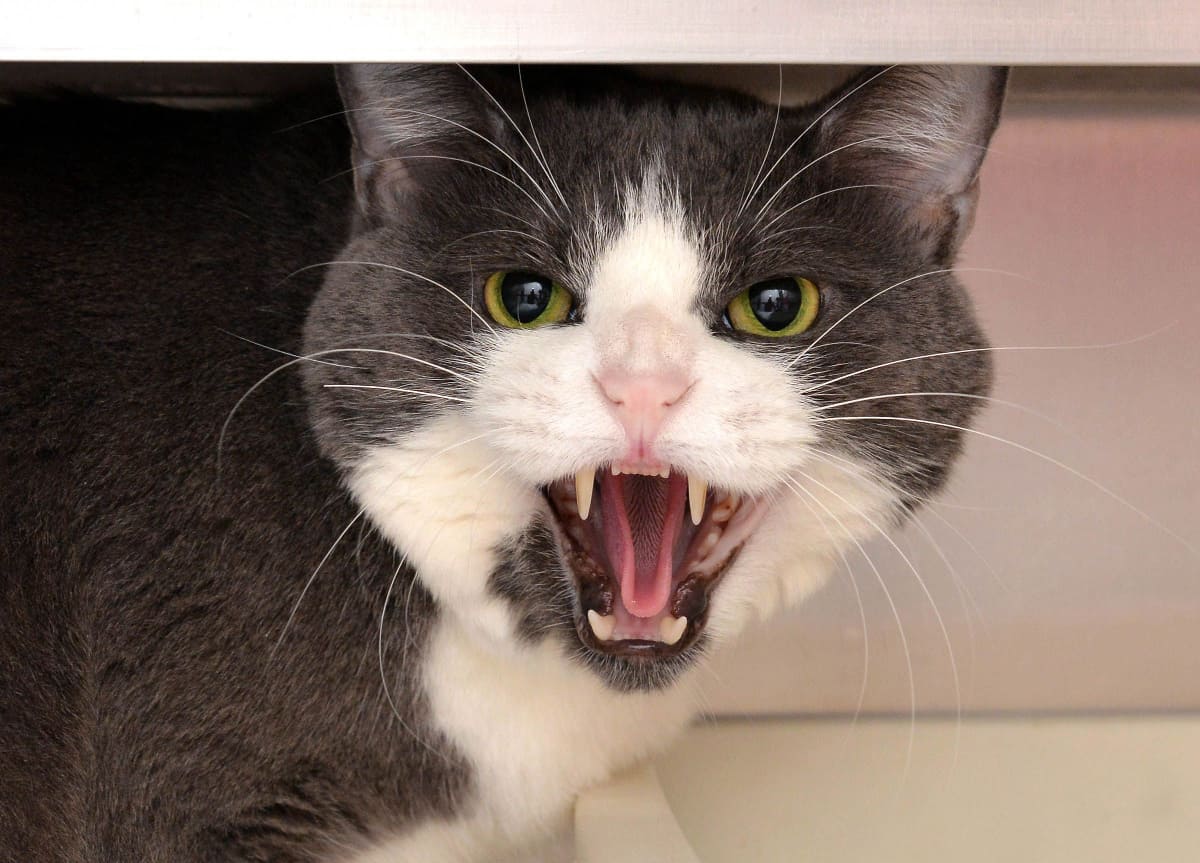
This cooling-off period will allow both you and your cat to calm down and reset before attempting to engage in play or other forms of interaction again.
Be Consistent
Do not allow playful aggression in any form. Whenever your kitten directs her aggression towards you, be it your hands, ankles, or any other body part, use the method described above to break away.
Do not allow aggression play when your hands or feet are under the covers, either.
Remember to provide your kitten with alternatives—either by bringing in a second cat into your home or by using cat toys.
Keep in mind that this is a natural behavior for kittens and young cats. They are more than likely to outgrow this phase at some point.
Handle this correctly, without ever shouting at or punishing your cat, and you should be able to make it across kittenhood with your skin intact.
And yes, you can still pet your kitten. Just wait for the little critter to be sleepy and relaxed.
If your cat is older, or you're just not sure why they bite and scratch, check out our article about the reasons for cat attacks to see if there could be another issue here.
SIGN UP FOR THECATSITE'S EMAIL UPDATES >
Comments? Leave them using the form below. Questions? Please use the cat forums for those!
Read more:
Playing With Your Cat: 10 Things You Need To Know
How To Choose The Best Toy For Your Cat
Note: We may get commissions for purchases made through links on this page.




13 comments on “How To Stop Playtime Aggression In Cats – Establishing Safe Play Routines”